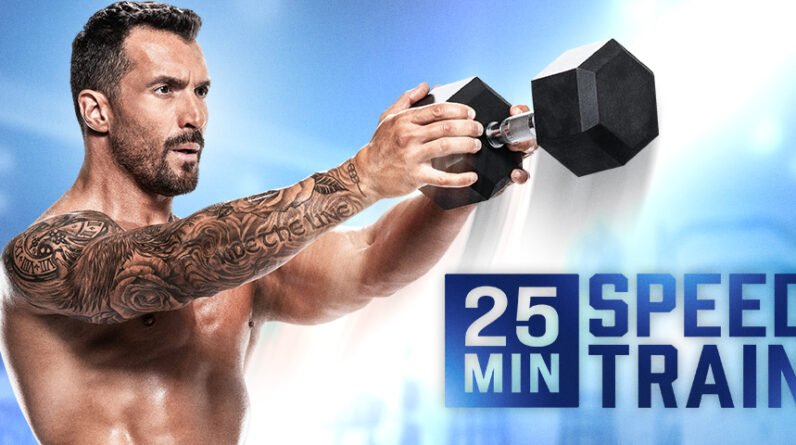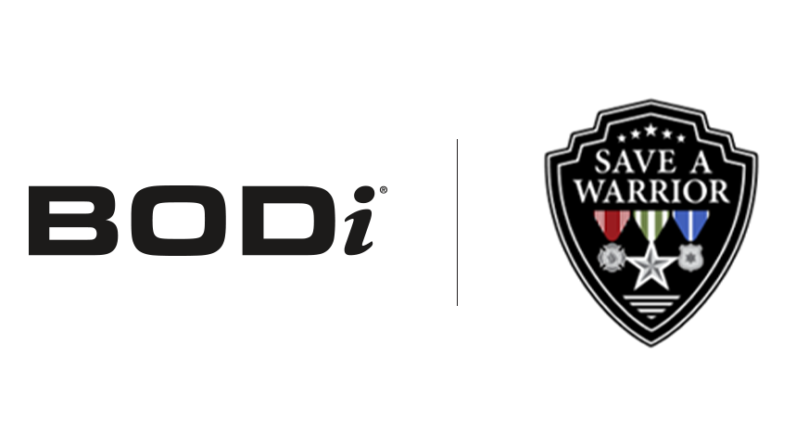
You might think that in the battle of kettlebell vs dumbbell, the latter holds the edge. After all, you’ll see rows and rows of dumbbells in most commercial gyms, while a smaller selection of kettlebells is often tucked away in a corner.
However, you’re better off utilizing one over the other depending on your workout and goals. Each one has its advantages, so we’ll help pinpoint the right tool for you.
What’s the Difference Between a Kettlebell and Dumbbell?
“The main difference between dumbbells and kettlebells is the shape of the implement,” says Jake Harcoff, MS, CSCS, head coach and owner of AIM Athletic.
Dumbbells consist of a short bar with weight at both ends, whereas kettlebells resemble a cannonball with a handle. This difference changes the weight distribution of each tool, which affects how you use them.
“When you hold a dumbbell in your hand, the center of mass is in the middle of your palm, between the two ends of the weight,” says Marvin Nixon, MS, an ACE-certified personal trainer. But when you hold a kettlebell by the handle, the center of mass is in the large part of the bell, which is usually below your palm.
“When you lift the kettlebell, this center of mass moves based on the speed of the movement and how the bell moves around your hands. This small change alters how our muscles, fascia, and even nervous system adapt to the movement being performed,” Nixon says.
Can You Use Kettlebells Instead of Dumbbells?
There are ideal uses for each tool, but generally, kettlebells and dumbbells are interchangeable. Chances are exercises will simply feel different with a kettlebell vs. a dumbbell. Some exercises may even feel more challenging.
Take the dumbbell shoulder press exercise as an example. When you press the dumbbell overhead, the weight is centered in your palm. But swap that dumbbell for a kettlebell and the weight is concentrated below your palm, on the outside of your wrist and forearm. Because of this shift, your body may find the kettlebell tougher to move, Nixon says.
That said, some people find kettlebells more comfortable than dumbbells for certain exercises. “I have worked with people who find holding a dumbbell for goblet squats hard on their wrists, but experience no pain when holding a kettlebell by the horns in the same position,” Harcoff says.
Best Workouts for Dumbbells
Dumbbells are typically a better choice for hypertrophy (muscle-building) workouts, as well as certain strength exercises.
For starters, many people find dumbbells easier to grip. “My clients tend to find dumbbells more comfortable for pressing exercises because it’s easier to maintain a neutral wrist position, where your wrist stays straight,” says Katie Prendergast, a NASM-certified personal trainer in Denver, Colorado.
Kettlebells, on the other hand, tend to pull the wrist backward because of their weight distribution.
In addition, dumbbells are often easier to maneuver for traditional bodybuilding moves, or exercises that zero in on specific muscle groups, such as triceps extensions, biceps curls, lateral raises, and chest flys, Prendergast notes.
Best Workouts for Kettlebells
With their center of gravity located below the handle, kettlebells are perfect for quick, explosive movements like swings, cleans, and snatches. These types of exercises will help you work up a sweat in no time at all. So if you’re looking for non-traditional cardio options, or you have a high-intensity interval training (HIIT) workout on your schedule, kettlebells are the way to go, according to Harcoff.
If you’re new to kettlebell workouts, Kettlebell Academy with Amoila Cesar will teach you the fundamentals of kettlebell training, focusing on drills for swings, cleans, and snatches. With three workout videos dedicated to each exercise, you’ll progress your skills and master each move.
As you’ll see in the program, you can then use these movements to easily transition from one exercise to the next. This way, you can keep your motions fast and fluid, which keeps the intensity high.
For example, if you’re doing unilateral (single-side) exercises, you could use the one-arm clean to get the kettlebell into position before launching into the offset squat. To increase the intensity, do a one-arm clean in between each squat rep. Then, when you’re ready to tackle the other side, use the one-arm swing to transfer the kettlebell from one hand to the other.
Which One Should I Use?
Those looking to build muscle and/or strength will likely do better with dumbbells, as these make it easier to perform traditional strength-training exercises, Prendergast says.
Meanwhile, people who prefer to focus on conditioning and calorie burning will appreciate kettlebell workouts. “They’re a great option for someone who doesn’t like running or other forms of cardio,” Prendergast says.
However, there’s no reason you can’t use kettlebells and dumbbells. “I often suggest that clients include a mix of kettlebells and dumbbells in their strength program,” Nixon says. Each training tool challenges your body in unique ways, which can ultimately make you a stronger, more well-rounded athlete.
Plus, trying out a new piece of equipment can give your routine a much-needed refresh, Harcoff says.
Where to Buy Kettlebells and Dumbbells
You can get your hands on dumbbells or kettlebells via many different vendors. Note that dumbbells are sold as a pair, whereas kettlebells typically come in singles.
That said, there are many adjustable weights and kettlebells on the market, which save you space and money.
1. Bowflex SelectTech 552 Dumbbells
Weight: 5 to 52.5 pounds (2.5-pound increments up to 25 pounds; 5-pound increments from 25 to 52.5 pounds)
This set of Bowflex dumbbells allows you to easily adjust the weight with a simple turn of the dial. It replaces 15 sets of weights so you save space but still have the ability to keep making strength gains.
Get them on Amazon.
2. CAP Barbell Rubber Coated Hex Dumbbell Set
Weight: 5, 10, 15, 20, 25 pounds
If you’re looking to do more accessory work at home, or if you just need some lighter dumbbells for specific types of training, this set is perfect for you. The rubber coating can reduce damage to equipment and flooring, and the handles include non-slip knurling for extra safety.
Get it on Amazon.
3. PowerBlock Sport EXP 5-50 Stage 1 Set
Weight: 2.5, 5, 7.5, 10, 15, 17.5, 20, 25, 27.5, 30, 35, 37.5, 40, 45, 47.5, 50 pounds
This set of adjustable dumbbells from PowerBlock replaces 16 sets of dumbbells and offers up to 50 pounds of weight per hand. And with two add-ons, you can get all the way up to 70 or 90 pounds per hand.
Get it at PowerBlock.
4. REP FITNESS Kettlebells
Weight: 17, 26, 35, 44, 53 pounds
REP FITNESS’ kettlebells are finished with premium textured matte to ensure no slipping or corrosion over time. They also have flat bottoms, which make them convenient to store and easy to use for exercises like push-ups, deadlifts, and renegade rows.
Get them on Amazon.
5. Bowflex SelectTech Kettlebell
Weight: 8, 12, 20, 25, 35, 40 pounds
Replace six kettlebells with one space-saving device with this adjustable kettlebell from Bowflex. It also features an ergonomic handle for a more comfortable grip during exercise.
Get it on Amazon.
6. Kettlebell Kings Competition Kettlebell
Weight: 18 lbs to 106 lbs
Just like Olympic weight plates, Kettlebell Kings’ competition kettlebells are all the same size, from their 18-pound bells to their 106-pound bells. They’re made of steel and have a 35-mm handle, which is the standard in international competitions.
Get them on Kettlebell Kings.







